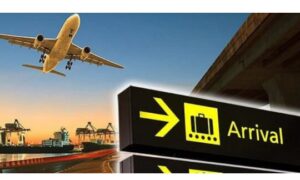In today’s dynamic and interconnected world, the landscape of transportation is undergoing a profound transformation, driven by the relentless march of technology. The emergence of On-demand services has heralded a new era, redefining the way we think about mobility and accessibility. From urban commuters to rural residents, people worldwide are experiencing the convenience and efficiency of On-demand transportation solutions. In this extensive exploration, we will delve deeper into the multifaceted impact of On-demand services, examining their evolution, societal implications, economic ramifications, and the boundless opportunities they offer for the future of transportation.
The Evolution of Transportation:
The journey towards on-demand transportation began with the convergence of mobile technology, GPS navigation, and the sharing economy. Traditional modes of transportation, such as taxis and public transit, were often characterized by inefficiencies, long wait times, and limited availability. Recognizing these pain points, innovative companies like Uber, Lyft, and Grab seized the opportunity to disrupt the status quo by leveraging smartphone apps to connect passengers with drivers in real-time. This paradigm shift not only democratized access to transportation but also introduced a new level of convenience and flexibility for users.
Convenience at Your Fingertips:
At the heart of On-demand transportation lies unparalleled convenience. Gone are the days of waving frantically for a cab or standing in line at a bus stop. With on-demand services, users can effortlessly summon a ride with a few taps on their smartphones, eliminating the uncertainties associated with traditional transportation methods. From scheduling rides in advance to tracking vehicle locations in real-time, the entire experience is tailored to meet the demands of modern lifestyles. Moreover, features such as cashless payments and driver ratings further enhance the convenience and transparency of the on-demand experience, fostering trust and reliability among users.
Enhancing Accessibility:
Beyond convenience, on-demand transportation has emerged as a catalyst for enhancing accessibility and inclusivity. By offering specialized vehicles equipped with wheelchair ramps and other accessibility features, on-demand platforms ensure that individuals with disabilities have equal access to transportation services. Furthermore, on-demand solutions have addressed transportation deserts in underserved communities, providing residents with reliable mobility options where traditional transit systems may be lacking. This democratization of transportation not only promotes social equity but also fosters greater participation in economic and social activities, ultimately enriching the quality of life for all members of society.
Economic Opportunities:
The rise of on-demand transportation has unleashed a wave of economic opportunities, transforming everyday individuals into entrepreneurs and service providers. Whether driving for a ride-hailing service, delivering groceries through a food delivery app, or transporting packages for a logistics company, individuals have the flexibility to monetize their time and resources on their terms. The gig economy model underlying on-demand platforms empowers drivers and delivery partners to dictate their schedules, allowing them to balance work with other commitments and pursuits. This newfound autonomy has democratized access to income generation, particularly for those facing barriers to traditional employment, such as students, retirees, and individuals residing in remote areas.
Moreover, on-demand platforms have facilitated the growth of ancillary industries, creating jobs in fields such as customer support, vehicle maintenance, and technology development. As these platforms expand their reach and diversify their services, the ripple effects are felt across the broader economy, driving innovation, and spurring economic growth in local communities.
The Future of On-Demand Transportation:
Looking ahead, the future of on-demand transportation holds immense promise, fueled by ongoing technological advancements and shifting consumer preferences. The convergence of artificial intelligence, machine learning, and Internet of Things (IoT) technologies is paving the way for more efficient, personalized, and sustainable transportation solutions. Autonomous vehicles, in particular, stand poised to revolutionize the industry, offering the potential for safer, more cost-effective, and environmentally friendly mobility options.
Furthermore, the integration of drone technology holds the promise of expedited delivery services, particularly in densely populated urban areas and remote regions. By leveraging aerial drones for last-mile delivery, on-demand platforms can reduce delivery times, alleviate traffic congestion, and minimize carbon emissions associated with traditional delivery methods. Additionally, advancements in electric and alternative fuel vehicles are driving the transition towards cleaner and greener transportation fleets, further aligning with global efforts to combat climate change and reduce environmental impact.
As we chart the course towards a more connected and sustainable future, it is imperative to address the challenges and opportunities presented by the continued expansion of on-demand transportation. Regulatory frameworks must evolve to ensure the safety, privacy, and fair treatment of both users and service providers. Additionally, investments in infrastructure, cybersecurity, and workforce development will be essential to support the growth and resilience of the on-demand ecosystem.
Conclusion
In conclusion, the rise of on-demand transportation represents a paradigm shift in the way we conceive of mobility, accessibility, and economic opportunity. From revolutionizing the daily commute to empowering individuals to pursue entrepreneurial endeavors, on-demand services have become an integral part of modern life. As we navigate the complexities of a rapidly evolving transportation landscape, embracing innovation, collaboration, and inclusivity will be key to unlocking the full potential of on-demand transportation and shaping a more sustainable and equitable future for all.



































